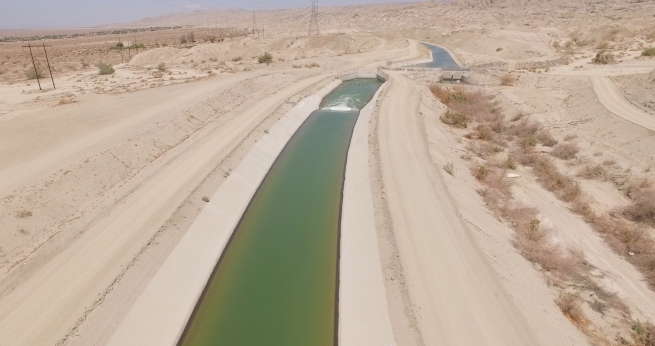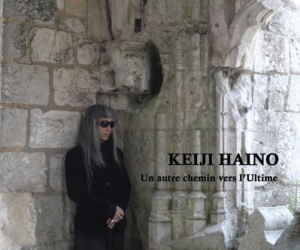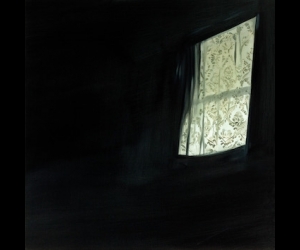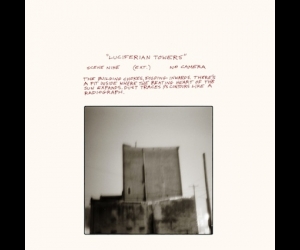
In Promised Lands, an installation by British artist Emma Wolukau-Wanambwa, alluring landscape emerges through foliage in the distance. Vegetation, lush and green, stretches all the way to hills on the horizon. Watching it makes you wish to enter that scenery, to wander around in it, to explore it up close. The camera that captures this vista doesn’t move, however, making you feel that you are being denied access. As you watch, darkness falls. It brings to mind the story of Moses, who is only allowed to look out over Israel after having led the Jewish people through the desert for forty years, but is barred from entering that promised land.
Wolukau-Wanambwa’s piece is one of the video installations in Hereafter—An Exhibition in Three Acts, which was spread over three locations in Amsterdam as part of the twenty-fifth edition of the annual Sonic Acts Festival. The festival set out in 1994 to bridge the gap between electronic dance music and electronic composition, and in this anniversary edition, rather than look back, it probes possible futures. The installations in Hereafter take stock of the state of this planet to arrive at an educated guess about what may be in store.
Some of the installations are spectacular and full of layered meanings. Imperial Valley (cultivated run-off) by Lukas Marxt presents stunning footage of industrial-scale monoculture plantations in the southern California desert. Underpinned by an electronic score, the imagery is extraordinary: the camera flies over round fishponds and irrigated sands, along endless lines of palm trees and shrubs; geometric shapes sometimes spin at relentless speed. The beauty of it all is breathtaking. It makes you wonder at first whether it may be computer-generated, but gradually you realize that it is real, and that human activity and consumption patterns transform environments into places that leave no room for indigenous creatures.
A different narrative is presented in Alexis Destoop’s Phantom Sun. Shot in Europe’s far north, where Norway borders Russia, it tells about a manmade disaster in an icy, snow-covered land that looks pristine at first glance, but turns out to be ravaged by mining and shipping. That visible damage may not be the worst that has befallen the area. In a tale, projected verbally on the ground in front of a wide screen, Destoop takes you on a path to a deserted town where a nuclear incident occurred, reminiscent of the contaminated zone around the Chernobyl nuclear plant and the zone in Andrei Tarkovsky’s 1979 film Stalker. This is mirrored by two other exhibits, Mediums by Ana Vaz and Ulrike Ottinger’s twelve-hour-long, three-part documentary Chamisso’s Shadow, about tribal groups in the far northeast of Siberia. The former deals with victims of radiation sickness after the Fukushima disaster who are being treated through rituals. The latter portrays people in a country that has forced them to renounce their nomadic way of living, making them lead sedentary lives in areas where industrial pollution is rampant.
On the face of it, the idyllic East African landscape in Promised Lands contrasts with these installations. But with quotes and dictionary entries superimposed on the images and spoken reflections, Emma Wolukau-Wanambwa adds layers of meaning, changing your understanding of what you see. It is cultivated land. Moreover, it is an area from which her family, who had lived there for generations, had been evicted after the land was bought by a man named Cooper. Projected entries about fiction and art make you further question the true nature and significance of that heavenly land, a place that is not her family's home anymore. She stands there on the boundary talking with her father, both of them refugees in the country where they originated.
After that thoughtful work at Arti et Amicitiae, the three rooms assigned to Tony Cokes in the Stedelijk Museum seem overdone. In each of them, the artist uses two TV screens and a projection on the wall to hammer politically charged texts into the viewers’ minds. This barrage doesn’t leave much room for thought, or for imagination. This confrontational approach is offputting instead of engaging. Consequently Cokes fails to provide food for thought, something the other artists in the festival do achieve: an artistic quality that lies in a delicate balance between image, sound, and words.
Photo: From Imperial Valley (cultivated run-off) by Lukas Marxt


